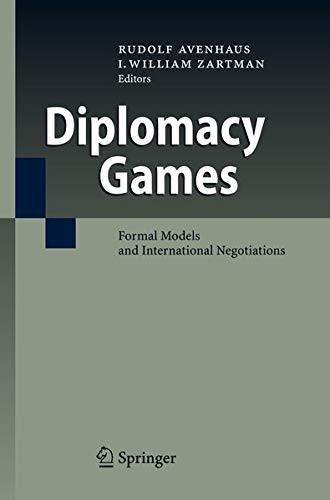Explore the World's Best Ideas
Join today and uncover 100+ curated journeys from 50+ topics. Unlock access to our mobile app with extensive features.
About Analysis Of/For Negotiations
Analysis of negotiations is descriptive and may draw insights from normative (or abstract) studies. Analysis for negotiations has a different flavor.
It is designed to help disputants and interveners (facilitators, mediators, or arbitrators) to do their job better in specific real-world negotiating problems.
But there is another aspect of analysis for negotiations that is different from background modeling of the environment of a dispute. How can analysis be used to help a disputant or intervener choose a course of action before, during, and after a negotiation?
13
148 reads
Decision Analysis Paradigm
Here the paradigm is more decision analytical than game theoretical. For example: What are the alternatives? What are the uncertainties (about physical parameters as well as interests, values, and actions of other disputants)? What actions can be deferred until information is gathered along the way? What are the multiple conflicting objectives?
The analyst might wish to model the actions to be taken by others in order to assess probability distributions over these action alternatives.
13
104 reads
Formal Models
In this regard, the sophisticated analyst should utilize the impressive body of growing literature on behavioral decision theory.
Formal models of international negotiations are either abstract mathematical theories, like Nash’s bargaining approach or Stahl and Rubinstein’s offer, which offer solutions to bargaining problems but do not really describe negotiation processes; rather, they give advice on how to agree immediately.
13
77 reads
Formal models in international negotiations
They may also be descriptive models of negotiations of the past or the present, which may be simplified guides to a social scientist or a historian to understanding the behavior of statesmen and diplomats.
Formal models in international negotiations are heuristic and dynamic by their very nature. They describe international negotiations with the help of external data showing the implications of contextual or structural elements of use in the negotiations, but they do not model the actual negotiations themselves, as in the first category.
13
63 reads
They provide useful knowledge about possible mechanisms or situational consequences to inform negotiators about alternatives and outcomes and to spur creativity infinding solutions.
Formal models for international negotiations are used to combine the preferences of the parties into optimal outcomes; possible values and outcomes are prioritized and quantified and then analyzed—often with the use of computer programs—to find where joint best payoffs may lie.
13
58 reads
IDEAS CURATED BY
CURATOR'S NOTE
Searching more information about international negotiations
“
Discover Key Ideas from Books on Similar Topics
8 ideas
Beyond Reason
Roger Fisher, Daniel Shapiro
9 ideas
Getting to Yes
Roger Fisher, William L. Ury, Bruce Patton
1 idea
Hands-On Transfer Learning with Python
Dipanjan Sarkar
Read & Learn
20x Faster
without
deepstash
with
deepstash
with
deepstash
Personalized microlearning
—
100+ Learning Journeys
—
Access to 200,000+ ideas
—
Access to the mobile app
—
Unlimited idea saving
—
—
Unlimited history
—
—
Unlimited listening to ideas
—
—
Downloading & offline access
—
—
Supercharge your mind with one idea per day
Enter your email and spend 1 minute every day to learn something new.
I agree to receive email updates
